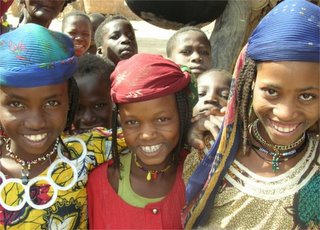
We've put some photos of Owen up on our Flickr account from this morning. He's anxiously awaiting Santa's arrival to Fianar.
Merry Christmas,
K, D, O
Former Trailing Spouse's -- now back in the US and working in the DC Metro area -- musings on life.

 Our internet experience at home just got a bit nicer. Just so readers back in the
Our internet experience at home just got a bit nicer. Just so readers back in the finally and have produced a flurry of activity in the rice paddies as farmers prepare for another growing season. On the central plateau—where both Tana and Fianar are situated—most paddies are terraced on hillsides with surprising precision in order to control water for irrigation. Fields have their own personalities and are unique in almost every way: size, shape, and fertility. The result is a mosaic landscape of shifting colors and textures as parcels move through the growing process.
 Last week Granville hosted a series of talks by author Kris Holloway, who spoke about her recent book, Monique and the Mango Rains: Two Years with a Midwife in Mali. A Granville native, Kris spent two years in
Last week Granville hosted a series of talks by author Kris Holloway, who spoke about her recent book, Monique and the Mango Rains: Two Years with a Midwife in Mali. A Granville native, Kris spent two years in Kristen and I heard Kris speak last Thursday night. She read passages to the audience about her time in
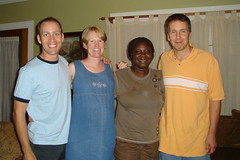
Last week KP and I visited Charley and Rachel in Columbus. For the non Peace Corps crowd, KP and Charley were volunteers together in Konni, and KP attended Charley and Rachel's wedding in Ouagadougou (Burkina Faso)--10 years ago next year! They've been in Columbus for a few years now and Charley works with the USDA as an agricultural statistician. Rachel works at an OSU hospital as a patient-rights advocate (aka she makes sure doctors and nurses are treating patients well in the ER).
They treated us to a West African and American fusion meal: Corn tuwo with baobab leaf sauce and lamb, roast chicken, acorn squash, and homemade apple pie. It was all fabulous (and considerably less gritty than the village equivalent in Niger would have been).
Mun gode, sosai. Alhamdililahi!

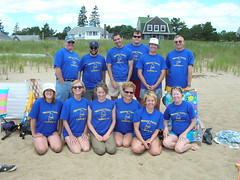
The office where I'm working in Tana is part of a mini-mall, seductively called The Waterfront. From a positional perspective the name fits, but that’s about it. In water-body taxonomy, the water to which the mall fronts is closer to a swamp than anything else. Real estate developers must have thought this name was preferable to Mall de Moustique, which would have been more descriptive and truthful. In previous times the swamp was bigger, covering more area than it does today. Some of the land was initially drained during construction of the mall, and more was done later to create space to build one of Tana’s gated-communities. Upon entering the community you pass through a wrought-iron gate staffed with 24-hour security, then drive along a tree-lined avenue with speed bumps every 100 meters, and take in views of the “waterfront” before you reach the mall. At times you could think this was somewhere in the US.
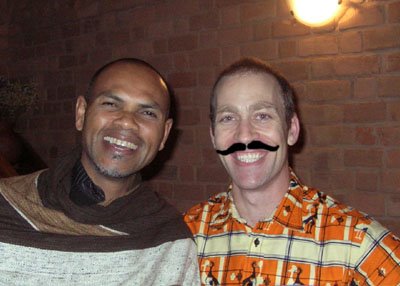
Karen and I worked out a menu, which wasn't as easy as you'd think. On the practical side, we were limited by ingredients and spices that were available locally or had been brought from the US; there's no Mexican grocery in Fianar (or anywhere on the island, I'd wager). Then there were social issues that dictated our choices of main courses. We ruled out tacos on the grounds that the French don't like eating with their hands, and tackling a taco would have them way out of their comfort zone. We rejected burritos for the same reason and settled on enchiladas, which, we felt, would not send ambiguous messages about the mode of consumption.
The menu is below, but here's a description of the dishes:Entrée - Pumpkin Soup with Cornbread (yes, I know cornbread is Tex-Mex, not Mexican)
Creamy puréed pumpkin flavored with cumin, cayenne, and bacon--just the thing to chase off winter's chill.
Dessert - Drunken Orange Cake & Mexican Coffee or Citronella Tea
A white cake infused with spirited syrup made of sugar, orange and lemon zest, and dark rum. Black coffee, flavored with sugar and cinnamon.

¡Que Bueno y Hasta Luego!
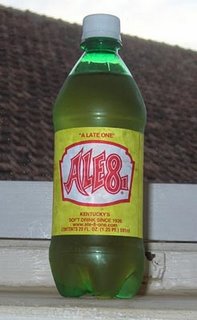

For years Kristen has been fond of saying occasionally, “I want you to show me South Africa.” Somehow she was convinced that the six-months I spent there so many years ago made me uniquely qualified to fulfill such a request. Two weeks is hardly any time to spend in South Africa, you’ll barely scratch the surface; so as a compromise, we agreed to squeeze in a bit of the old (Sodwana Bay and Cape Town) with some new (St Lucia, Hluhluwe Game Reserve, and the Drakensberg Mountains).
I think even as early as landing in Jo’burg, I felt my memory begin to betray me. Granted South Africa has boomed since I left in 1994, but even so, I think there’s more to this feeling. I believe I was a very young and hedonistic 19 years old when I first set foot in South Africa and never got curious beyond whatever was happening immediately around me. Much of my memories are suspect and lacking in detail, and now that makes me a bit sad. I like to think I’m more clued in these days, so, in some ways I was seeing everything as fresh, and with as much awe, as Kristen. San rock painting
San rock painting Hungry hippos
Hungry hippos Prisoners on Robben Island
Prisoners on Robben Island

These little beauties were a tasty addition to the Javanese peanut dish we make occasionally. I expected to have some latent revulsion to handling the animals after all the exposure from Zoology 102 dissections, but I guess I’m made of stronger stuff. The scuttlebutt on crayfish here in Fianar is that they are good indirect indicators of forest corridor health: The more crayfish coming to market, the healthier the forest. I’m sure I was sufficiently ripped-off at the market today buying these (although, I’m not sure how angry I can be; I still only paid the equivalent to 50 cents per pound) to keep the incentive for protecting the watershed up. What a small price to pay.

Waves reflected sunlight off mirrored tips and back into our faces as the boat made steady progress across the small stretch of Indian Ocean separating the island of Nosy Mangabe and the Masoala peninsula. Masoala, Malgache for “eyes of the forest,” in Madagascar’s northeast is where tropical forest abruptly meets ocean in an awesome display—and array—of flora and fauna found nowhere else on the great island. Kristen, Jared and I were in search for as much of this diversity as could be fit into a four-day stay on the peninsula, and Bidas, our guide, was keen on helping us meet this objective. The reflected sunlight, the constant whine from the boat’s engines, and the rocking action of the waves lulled us into a somnolent state, and we looked through squinted eyes as the peninsula neared.
We had already spent one day and night on Nosy Mangabeand saw almost all that the island has to offer by way of celebrity fauna. We spotted leaf-tailed geckos (thanks to Kristen’s bright eyes), malachite kingfishers, and a miniscule member of the chameleon family, a Burcesia, that measured less than an inch long. We failed, however, to observe the island’s most elusive superstar, the aye-aye. Aye-ayes are possibly the most freakish member of the lemur family: a Frankenstein’s lemur with bat ears, rodent teeth, and a long skeletal middle-finger tipped with a talon that it uses to skewer tree-dwelling insects and to open seed pods. One population of the species was relocated to the island in the 1970s by the government of Madagascar in an attempt to avoid extinction. Thanks to conservation efforts over the last thirty years, small populations of aye-ayes can be found elsewhere on the main island, however, Nosy Mangabe still tops the list for aye-aye density.

After landing and getting installed in our bungalows, we settled into a comfortable and predictable pattern of eating, hiking, eating, snorkeling, playing UNO, eating, and chilling out. One evening before supper we walked to a nearby community to watch a dance performance. A group of about 12 women and one man sat waiting for us. The man began to beat an empty plastic 20 liter water jug with a stick and some of the women had crude percussion instruments to accompany his playing. Then the man led the women in some call-response style songs. When we arrived we noticed a length of a wooden plank laid out in front of the seated women. Soon it became clear what its purpose was in performance. As the singing gained momentum, pairs of women stood up took turns dancing and stomping atop the wooden plank, using their feet to punctuate the beat of the music.
The highlight of the dance for me came from an unexpected performance of the Chicken Lady. During one number an old woman came cruising past the dancers carrying a chicken in one hand and a machete in the other, seemingly en route to her home. However, in passing the group, the Chicken Lady stopped and put her point on the floor—along with said chicken and machete—and stole some of the spotlight from the two women dancing on the plank.
Every day we hiked with Bidas to a new part of the peninsula, and the peninsula never disappointed. In addition to wonderful animals like the red-ruffed lemurs and the Technicolor panther chameleons, we also saw some amazing plants. Epiphytic orchids tucked themselves into nooks and crannies, and we saw huge Palisandra and Rosewood trees with giant buttresses supporting massive boles. At every turn we were surprised and delighted at the innovativeness with which the peninsula residents have shown to adapt so well to their environment. Several animals, particularly insects, have mastered the art of camouflage and stealth, adding to the simultaneous frustration and delight of us would-be seekers.

Our stay on the island was cut unexpectedly short. On Christmas Eve night, Bidas stopped by our bungalow seeking first aid for our boat captain, who, he said, had a cut hand. We asked that the captain be brought by, and when we saw him realized from the crude, bloody dressing that we might have a problem. Removing the dressing revealed a gash on the back of his hand, and upon its closer inspection, Doctors Pappas and Patterson (K) diagnosed a severed vessel, most likely a vein since bleeding had already mostly stopped. With nurse Patterson (D) assisting, the good doctors cleaned and bandaged the hand. Afterwards we decided to return to Maroansetra the next day, a day earlier than scheduled, so the captain could go by a clinic for proper treatment.
Back on board the boat, retracing our path from a few days before, the inevitable reality began to descend on us that our time in paradise was nearly up. The peninsula shrank from view and the eyes of the forest watched us go.





